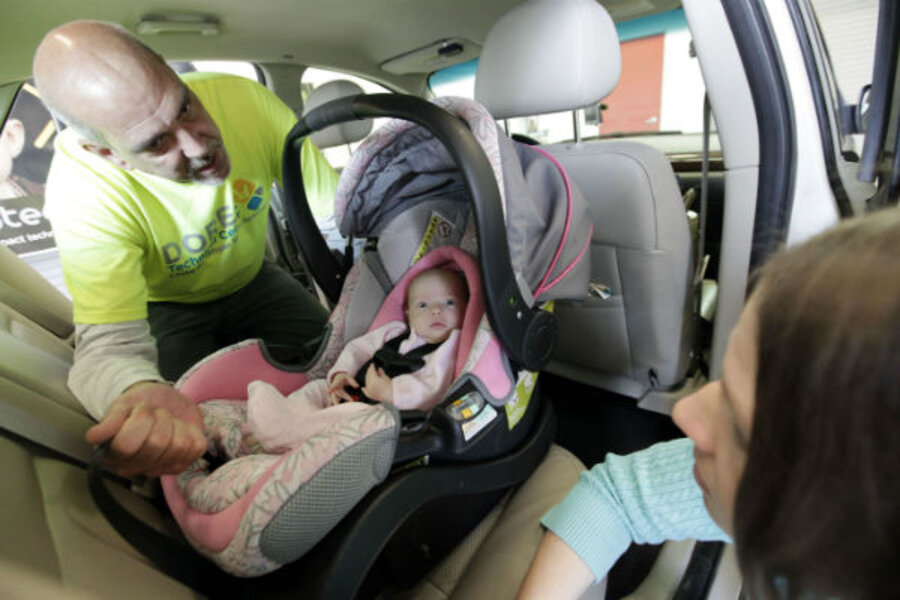Car seat study: What safety mistakes do most new parents make?
Loading...
A study presented Monday at the American Academy of Pediatrics National Conference in San Diego, suggests that the majority of new parents are incorrectly buckling their infants into car seats on their first trip in the car.
Due to poor positioning or incorrect installation, infants are being exposed to safety risks. According to the study, 93 percent of parents preparing to leave the hospital make at least one critical error with the car seat.
Researchers from Oregon Health and Science University asked 267 new mothers and designated caregivers to install the car seats and position an infant in the seat.
According to a press release about the study, “A certified child passenger safety technician observed new mothers or a designee position the newborn in the car safety seat and install the seat in the vehicle in which they would be leaving the hospital. The technician recorded all misuses based on car safety seat and vehicle manufacturer recommendations. Prior to departure, technicians helped caregivers correct all mistakes.”
Two of the biggest safety errors noted by researchers fell into two categories – the infant’s position in the seat and how the seat was installed. Researchers found that 69 percent of the safety risks came from positioning errors because the car seat harness was too loose, while 34 percent of parents had the retainer clip too low.
Safety organization Safe Kids Worldwide offers a car seat checklist for new parents, and recommends that the harness be tightly buckled, with straps coming through the correct slots in the back of the chair. Also, Safe Kids Worldwide instructs that the chest clip should be placed at armpit level and that you should be unable to pinch any excess fabric from the harness.
The site also suggests doing an “Inch test” which involves giving the seat base a good shake to see if it is secure once it has been installed. If you can move it more than an inch either side to side or front to back, it needs to be reinstalled. A properly installed safety seat will not move more than one inch.
Car safety seats can be difficult to install but there are plenty of resources and services to help ensure the safest possible travel for newborn and all children. To find a certified technician you can call 1-866-SEAT-CHECK or go to www.seatcheck.org.
On Tuesday, the Today show partnered with AAA to produce a segment including video of proper car seat installation for new parents.
Most importantly, experts suggest that new parents take extra time to install and have their new car seat inspected ahead of its first trip with baby inside. While wrestling with a car seat might not be as warm and fuzzy as folding new baby clothes or decorating a nursery, it can be a lot more important.





